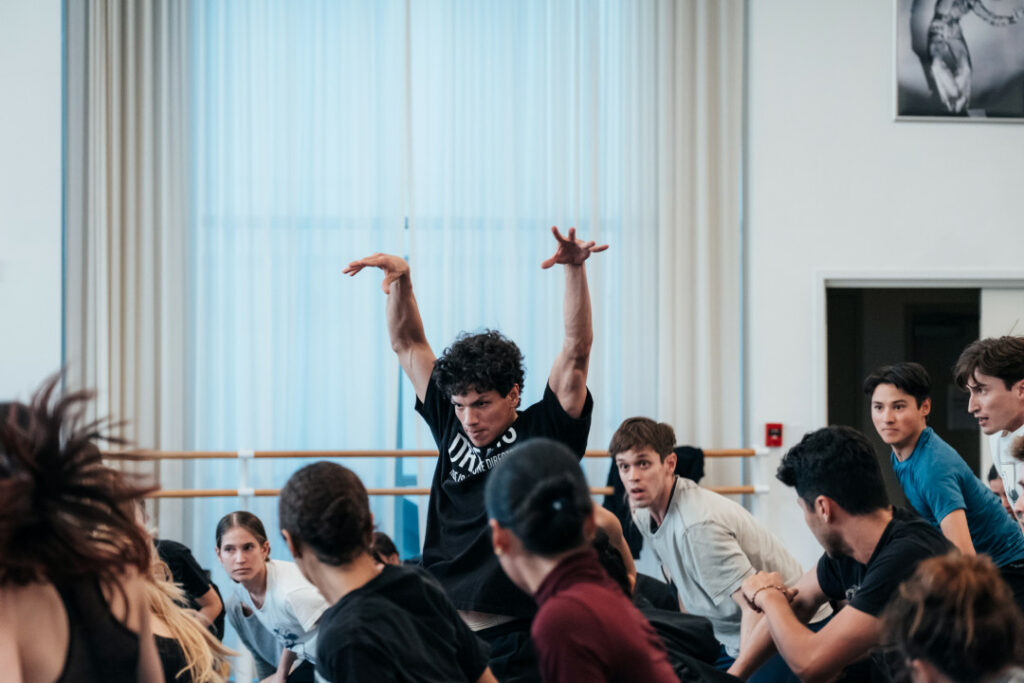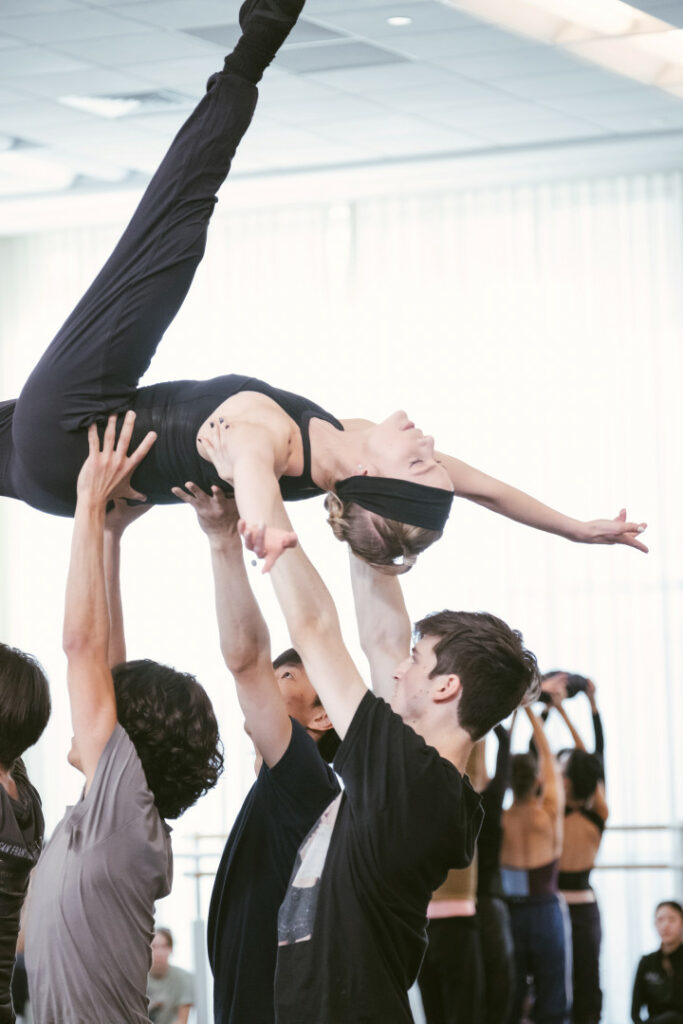YOUR ULTIMATE GUIDE TO MERE MORTALS
Pandora’s Myth for Today’s Technological World
What is it: A world premiere from composer Sam Shepherd (aka Floating Points) and choreographer Aszure Barton, contextualizes the ancient parable of Pandora and her jar for today’s technological world.
In short: Pandora is the first mortal woman created by the gods. She’s given a jar as a gift from Zeus and an explicit warning not to open it under any circumstances. When curiosity gets the better of her, she opens the jar, releasing all the evils and miseries into the world. Only hope remains trapped inside.
This ballet inevitably draws parallels to the philosophical questions we are asking ourselves today around artificial intelligence (AI) and how humankind is forging new paths in this unknown territory, despite the risk.

Who’s it for: Greek mythology buffs, Coachella festival-goers, house music aficionados, anyone who has stayed up late with friends debating the merits and consequences of artificial intelligence.
What will I see? While the characters won’t be introduced onstage in a formal or traditional manner, these are the key players that will emerge from the larger group of dancers:
- Hope is the first character that we meet, one that Barton and Kovacs sketched out to be ever-present onstage as a metaphor—a constant grounding presence from the start of the ballet. Described here by Dramaturg, Carmen Kovacs, “Hope is a floating particle that will forever surround us, like curiosity… an enormously powerful force that dies last, or not at all.” Audiences will notice that the character of Hope is not part of the ensemble; they are the only dancer who remains on the outside of the group. Choreographically speaking, “Hope is like a peaceful tornado, a force of nature that can’t go away.” This is a gender-expansive role where the character of Hope will be portrayed by both male and female dancers.
- Prometheus is the second character we meet. He is a cunning character who, in our telling of the story, is part of the gods but is also a rebel who thrives in chaos. He steals the fire from the gods and brings it to the humans because he is bored and looking to play. The fire represents progress, enlightenment, power, and destruction all at once. Kovacs notes, “Instead of representing Zeus as a separate character onstage, we melted a touch of Zeus into Prometheus. Onstage he emerges as a leading figure, often pulling the strings, quite literally, for the group as a whole.”
- Pandora is a new human species with advanced skills that embody progress and learning. She is more knowledgeable than the gods, though it’s not immediately clear exactly what this knowledge is. Kovacs notes that in the myth, Pandora doesn’t have a voice – “We don’t know what she’s thinking or feeling, what her intentions are, or what her truth is. So, we took the opportunity to give her a voice with a kind of monologue where she introduces herself choreographically, and she shows that she has a totally different skill set from the group of dancers.” Together with Epimetheus, Pandora opens the jar. “It is their combined limitless and fearless curiosity that opens the door to inevitable change – and as soon as the others realize what’s possible, they want to be part of that, too.” Similar to the character of Hope, Barton has cast both male and female dancers in the role of Pandora.
- Epimetheus is Prometheus’ brother, so viewers can look at how the choreography showcases their brotherly relationship while also hinting at potential familial conflict. In contrast to the original narrative, Epimetheus is not a simple or naive character, Kovacs notes; instead, he is “one of the few fearless beings who follows his curiosities and welcomes new ideas and inventions.” He is a divine being with intuition, passion, and unstoppable drive, willing to take risks and follow the people and ideas that excite and delight him.

What should I look for? Watch for how choreographer Aszure Barton has worked with different movement qualities and forms in order to illustrate each character’s unique view of the world, exploring their posturing, personalities, strengths, and weaknesses. Viewers can watch for how the movement quality differs between characters based on their backgrounds, storylines, and intentions.
Greek mythology buffs might identify some nuanced parallels between this ballet and the myth of Pandora, however, anyone will be able to follow the story. “The audience doesn’t have to know the myth at all to take meaning from the ballet because you will naturally feel what it’s about, plus you can interpret and project your own ideas and feelings. But I think it might be interesting to have that context of the actual myth and then to see, especially in combination with AI, what happens and to follow that journey.” – Dramaturg, Carmen Kovacs









